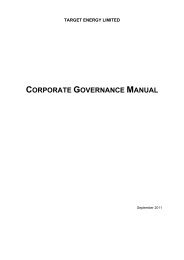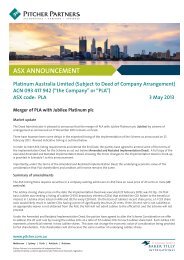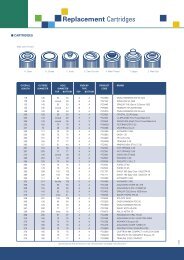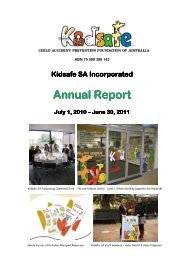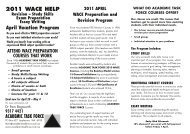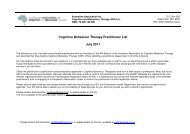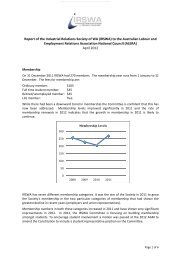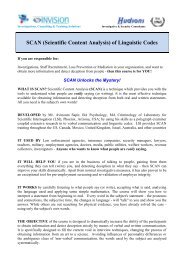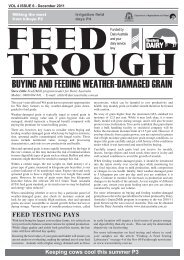ANNUAL REPORT 2006
ANNUAL REPORT 2006
ANNUAL REPORT 2006
You also want an ePaper? Increase the reach of your titles
YUMPU automatically turns print PDFs into web optimized ePapers that Google loves.
NOTE 1: STATEMENT OF SIGNIFICANT ACCOUNTING POLICIES (continued)<br />
(q) Impairment of assets (continued)<br />
An assessment is also made at each reporting date as to whether there is any indication that previously<br />
recognised impairment losses may no longer exist or may have decreased. If such indication exists, the<br />
recoverable amount is estimated. A previously recognised impairment loss is reversed only if there has been a<br />
change in the estimates used to determine the asset’s recoverable amount since the last impairment loss was<br />
recognised. If that is the case the carrying amount of the asset is increased to its recoverable amount. That<br />
increased amount cannot exceed the carrying amount that would have been determined, net of depreciation,<br />
had no impairment loss been recognised for the asset in prior years. Such reversal is recognised in profit<br />
or loss unless the asset is carried at revalued amount, in which case the reversal is treated as a revaluation<br />
increase. After such a reversal the depreciation charge is adjusted in future periods to allocate the asset’s<br />
revised carrying amount, less any residual value, on a systematic basis over its remaining useful life.<br />
A N N U A L R E P O R T 2 0 0 6<br />
(r)<br />
Trade and other payables<br />
The Group has elected to apply the option available under AASB 1 of adopting AASB 132 and AASB 139 from<br />
1 July 2005. Outlined below are the relevant accounting policies for trade and other payables applicable for<br />
the years ending 30 June <strong>2006</strong> and 30 June 2005.<br />
Accounting policies applicable for the year ended 30 June <strong>2006</strong><br />
Trade payables and other payables are carried at amortised cost and represent liabilities for goods and<br />
services provided to the Group prior to the end of the financial year that are unpaid and arise when the Group<br />
becomes obliged to make future payments in respect of the purchase of these goods and services.<br />
Accounting policies applicable for the year ended 30 June 2005<br />
Trade payables and other payables are carried at cost which is the fair value of the consideration to be paid<br />
in the future for goods and services received, whether or not billed to the consolidated entity.<br />
(s)<br />
Provisions<br />
Provisions are recognised when the Group has a present obligation (legal or constructive) as a result of a past<br />
event, it is probable that an outflow of resources embodying economic benefits will be required to settle the<br />
obligation and a reliable estimate can be made of the amount of the obligation.<br />
When the Group expects some or all of a provision to be reimbursed, for example under an insurance contract,<br />
the reimbursement is recognised as a separate asset but only when the reimbursement is virtually certain. The<br />
expense relating to any provision is presented in the income statement net of any reimbursement.<br />
If the effect of the time value of money is material, provisions are discounted using a current pre-tax rate that<br />
reflects the risks specific to the liability.<br />
When discounting is used, the increase in the provision due to the passage of time is recognised as a<br />
borrowing cost.<br />
page 43



